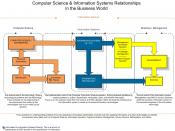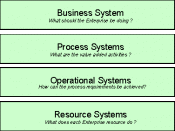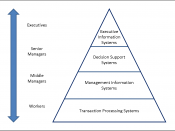Information Systems and the
Organization of Modern Enterprise
Published in Journal of Organizational Computing, December, 1993.
Correspondence to:
Maverick
Keywords: Organizational design, information systems, economics
Information Systems and the Organization of Modern Enterprise
ABSTRACT
This paper, and the special issue, address relationships between information systems and changes in the organization of modern enterprise, both within and across firms. The emerging organizational paradigm involves complementary changes in multiple dimensions. The revolution in information systems merits special attention as both cause and effect of the organizational transformation. This can be illustrated by considering two key variables: the location of information and the location of decision rights in organizations. Depending on the costs of information transmission and processing, either the "MIS solution" of transferring information, or the "organizational redesign solution" of moving decision rights, can be an effective approach toward achieving the necessary collocation of information and decision rights. When information systems change radically, one cannot expect the optimal organizational structure to be unaffected.
Considering the interplay among information, incentives and decision rights in a unified fashion leads to new insights and a better organizational planning. The papers in the special issue address different facets of this interaction. Despite significant progress, our understanding of the economic role of information systems in organizations remains in its infancy. We conclude that successful design of modern enterprise will require further narrowing of the historic gap between research in information systems and research in economics.
The organization of work is in the midst of transformation. In many industries, mass production by large, vertically-integrated, hierarchically-organized firms is giving way to more flexible forms of both internal organization and industrial structure. Work is increasingly accomplished through networks of smaller, more focused enterprises. The resulting structure of loosely coupled sub-organizations blurs the boundaries of both firms and industries.
A canonical...


